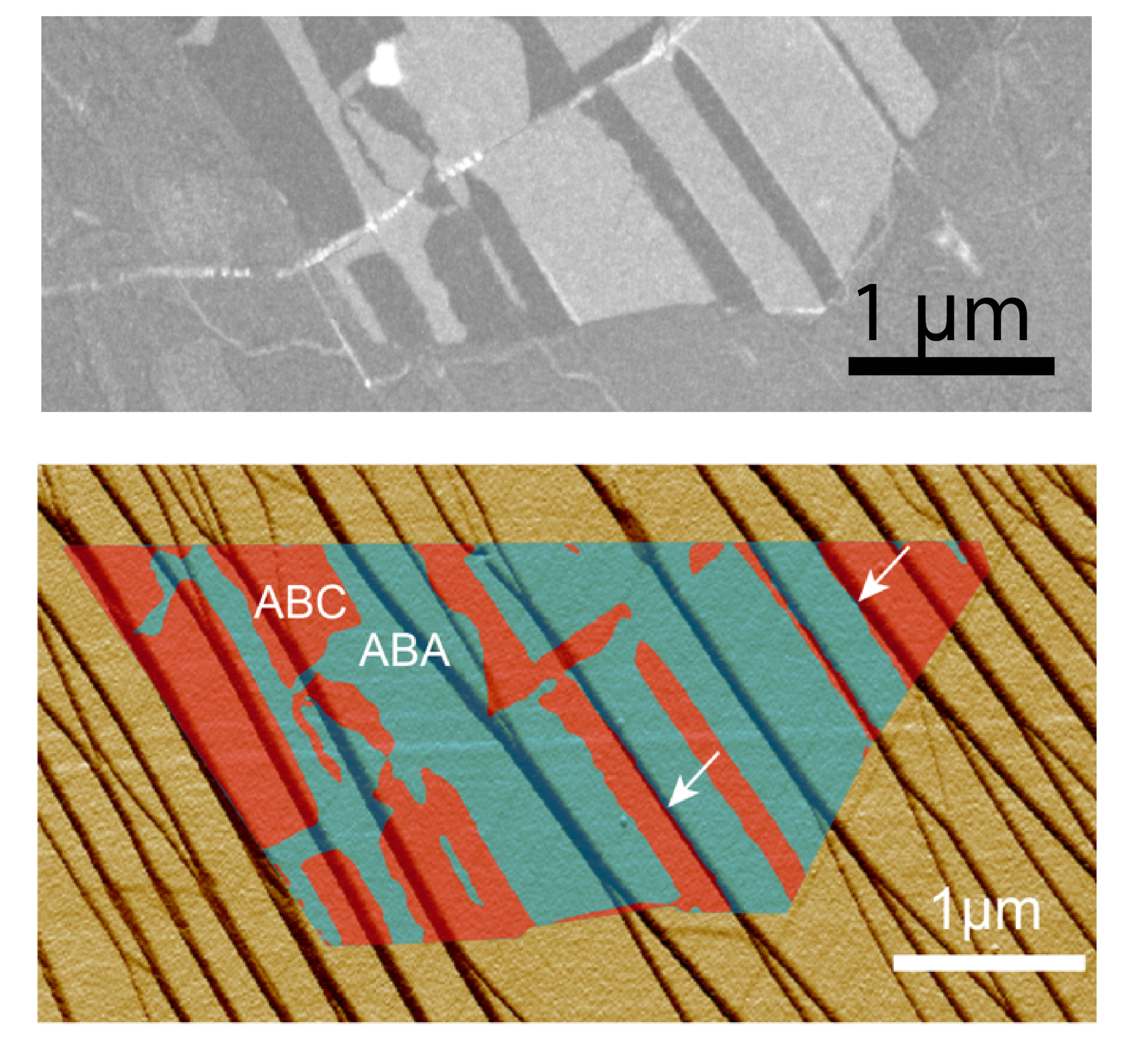

Topological order describes the global properties over an entire band and is robust against local perturbations. A topological phenomenon that promises enticing applications is the protected edge mode, in which waves are allowed to travel around large imperfections without back-reflection. On the other hand, integrated phononic circuitry is an emerging field, mainly due to two desired properties. First, phononic radio frequency devices have small footprints, owing to much smaller wavelengths of phonons than electromagnetic waves at the same frequency. Second, phonons interact with various degrees of freedom, including spins, electric fields, and photons, making them attractive candidates as universal transducers of quantum information. Realizing topological phonon modes in integrated phononic circuitry envisions beneficial and exciting properties. Our work in this interdisciplinary field are both theoretical and experimental.

Zhang, Q.; He, L.; Mele, E. J.; Zhen, B.; Johnson, A. T. C.
General duality and magnet-free passive phononic Chern insulators
Nature Communications, 14, 916 (2023). DOI: 10.1038/s41467-023-36420-4
Significance:
1. Discovered the effect of general duality on the symmetry breaking engineering.
2. Found a new control approach of bandstructure in piezoactive systems.

Zhang, Q.*; Lee, D.*; Zheng, L.; Ma, X.; Meyer, S. I.; He, L.; Ye, H.; Gong, Z.; Zhen, B.; Lai, K. & Johnson, A. T. C.
Observation of gigahertz topological valley Hall effect in nanoelectromechanical phononic crystals
Nature Electronics 5, 157 (2022). DOI: 10.1038/s41928-022-00732-y
Significance:
Demonstrated the first gigahertz phononic valley Hall effect by introducing TMIM to characterize phononic crystals.
Van der Waals (vdW) materials composed of atomic layers held together by vdW interactions can be tuned by manipulating interlayer twisting angles, creating heterostructures, and controlling stacking configurations. The stacking is nontrivial in few-layer graphene. For example, the line fault between AB and BA stacking orders in bilayer graphene afford topologically protected valley Hall boundary modes. The ABC stacking order in trilayer graphene is known to support correlated states. We have been doing some work in stacking order engineering and its characterizations.

Gao, Z.*; Wang, S.*; Berry, J.*; Zhang, Q.*; Gebhardt, J.; Parkin, W. M.; Avila, J.; Yi, H.; Chen, C.; Hurtado-Parra, S.; Drndić, M.; Rappe, A. M.; Srolovitz, D. J.; Kikkawa, J. M.; Luo, Z.; Asensio, M. C.; Wang, F. & Johnson, A. T. C.
Large-area epitaxial growth of curvature-stabilized ABC trilayer graphene
Nat. Commun. 11, 546 (2020). DOI: 10.1038/s41467-019-14022-3
Significance:
Discovered the stabilization effect of substrate curvature on ABA-ABC stacking walls of trilayer graphene.

Gao, Z.; Zhang, Q.; Naylor, C. H.; Kim, Y.; Abidi, I. H.; Ping, J.; Ducos, P.; Zauberman, J.; Zhao, M. Q.; Rappe, A. M.; Luo, Z.; Ren, L. & Johnson, A. T. C.
Crystalline bilayer graphene with preferential stacking from Ni-Cu gradient alloy
ACS Nano 12, 2275–2282 (2018). DOI:10.1021/acsnano.7b06992
Significance:
Developed a method for few-layer graphene growth with preferred twisting angles.
Nanoscale electronic materials are sensitive to their environment, which makes them ideal for sensors. Carbon nanotube (CNT) and graphene materials have attracted enormous attention to fabricating biosensors that enable simple and cost-effective diagnosis. We have participated in bringing these sensors onto the market.

An "Electronic Nose"
In this photo, Qicheng (Scott) introduces a hand-held prototype to replace the sensing system in the big mesh box. The system uses a sensor array made of carbon nanotubes interwoven with DNA to detect odor signatures for disease diagnosis at an early stage. It is an electronic version of dogs' noses. For more details, please see the report in Penn Today. Forbes, Philly Voice, Science Daily, etc., have also reported this news.